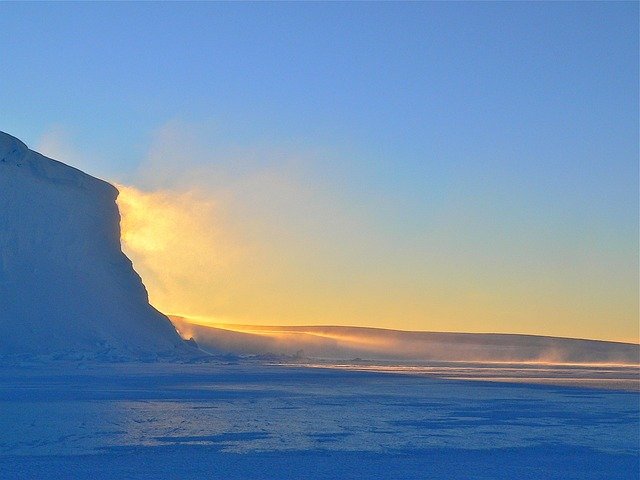This article on compass facts for kids explores the history and significance of the compass, a key tool in navigation and exploration. We’ll examine different types of compasses, their uses, and delve into the science behind how they work. Additionally, the article offers insights into essential map and compass reading skills and includes a simple guide for creating a DIY compass, highlighting the enduring importance of this navigational tool.
Compass Facts For Kids
History of the Compass
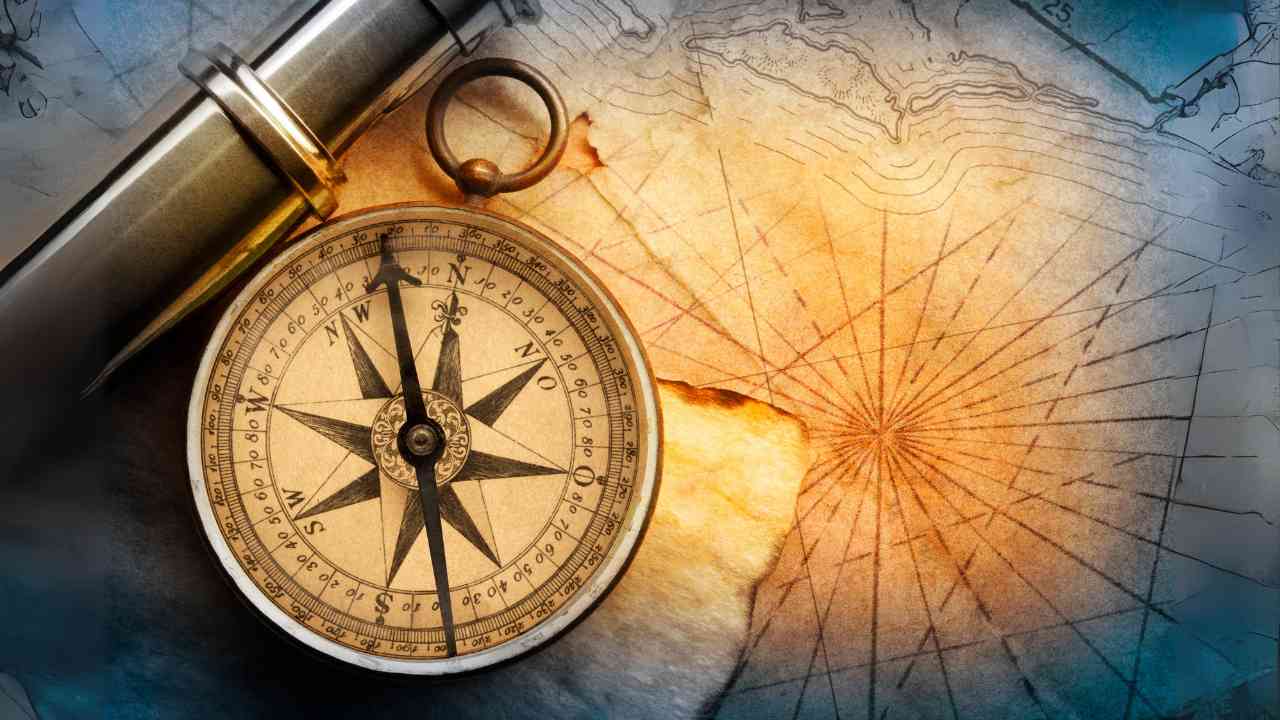
The compass, an essential tool in navigation and geographic orientation, boasts an intriguing history spanning over two millennia. Its first appearance dates back to the Han Dynasty in China around 206 BC, where it was initially used for divination rather than navigation. Early compasses were crafted using lodestone, a naturally magnetized iron ore.
In Chinese literature from the 4th century BC, there’s mention of a device similar to a compass, noting that “The lodestone attracts iron.” This early insight into magnetic properties set the stage for the compass’s invention. By the 11th century, during the Song Dynasty, the compass had evolved significantly from its mystical origins to a tool for navigation.
In Europe, the compass is first mentioned in the works of Alexander Neckam around 1190 to 1217. These early compasses were rudimentary, consisting of a magnetized pointer floating in a bowl of water. The 14th century saw the introduction of directional markings on the compass card, greatly enhancing its utility and accuracy, thereby profoundly impacting navigation and exploration.
Around the 13th century, the Islamic world also began using the compass, with the earliest mention in a Persian storybook dated to 1232. The widespread use of the compass across various cultures underlines its universal appeal and functionality.
Over the centuries, the compass underwent numerous adaptations and improvements, particularly in marine navigation. By the 15th century, navigators had recognized the difference between magnetic north and true north, leading to an understanding of magnetic variation or declination. This knowledge was vital for precise navigation, especially near the poles where the variation is more pronounced.
The 18th century marked further advancements with the development of the dry mariner’s compass and the bearing compass. These improvements made the compass more usable and precise, ensuring its accuracy and portability for navigation on both land and sea.
How a Compass Works
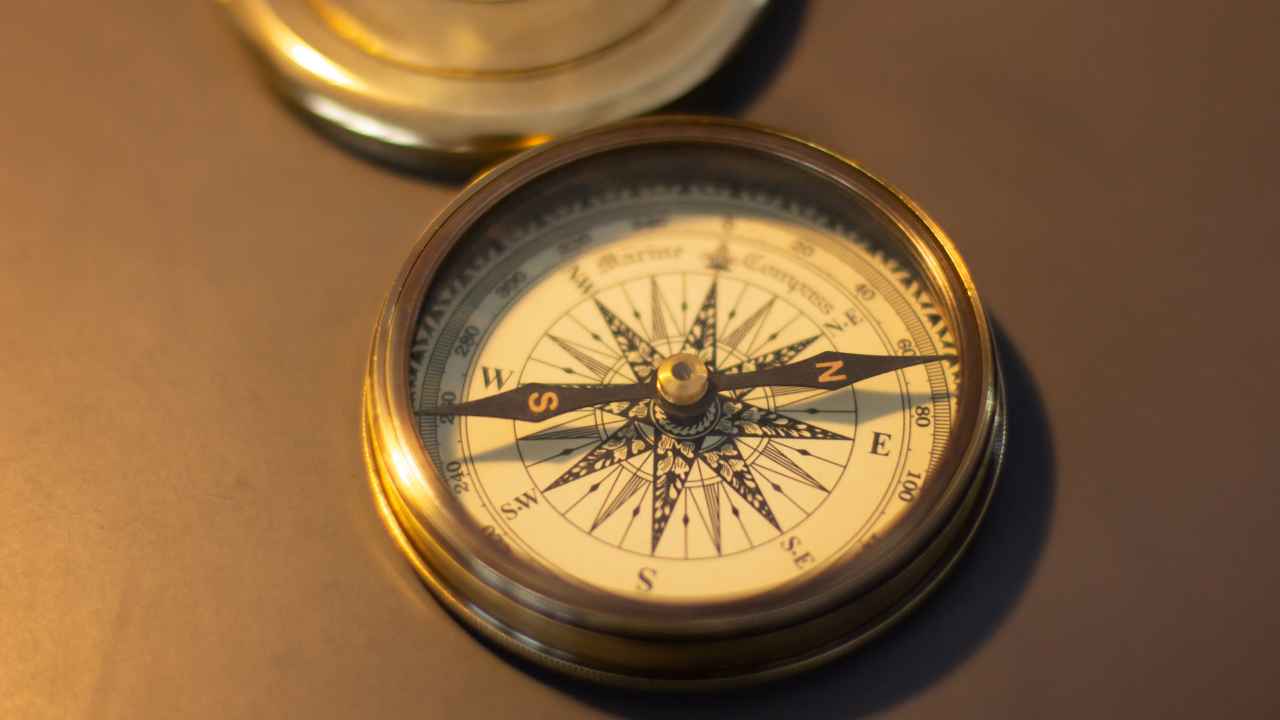
The basic principle behind a compass lies in its response to Earth’s magnetic field. At its heart, a compass consists of a small, lightweight magnetized needle that is free to pivot in any direction. This needle aligns itself with Earth’s magnetic field, pointing towards the magnetic poles.
Magnetic Fields and Earth’s Magnetism
Earth itself is like a giant magnet, with magnetic poles near its geographical poles. The North Magnetic Pole, towards which a compass needle points, is not exactly aligned with the geographical North Pole but is close enough for navigation purposes.
When you hold a compass, the needle aligns with the Earth’s magnetic field lines. These lines emerge from the Earth’s magnetic South Pole, curve across the planet, and re-enter at the magnetic North Pole. The compass needle, being magnetized, aligns along these lines.
The Compass Needle
The compass needle is typically a small, lightweight magnet. One end of the needle is often marked (usually painted red) to indicate the North Pole of the needle. This end is attracted to the Earth’s magnetic North Pole. In a properly functioning compass, this needle can rotate horizontally 360 degrees.
The needle’s ability to pivot freely is crucial. It is typically mounted on a low-friction pivot point or suspended in a liquid to dampen unnecessary movements, making it more stable and easier to read.
Magnetic North vs. True North
It’s important to note that a compass points to the magnetic North Pole, which is different from the geographic North Pole (True North). The angle between magnetic North and True North varies depending on where you are on the Earth’s surface. This difference is known as magnetic declination, and navigators need to account for it when navigating by compass, especially in high latitudes closer to the poles.
Compass Variations
Modern compasses might come with additional features to assist in navigation, like scales for map reading, sighting mechanisms for accuracy, or adjustments for magnetic declination. Some advanced models are also designed to compensate for tilting angles.
Different Types of Compasses
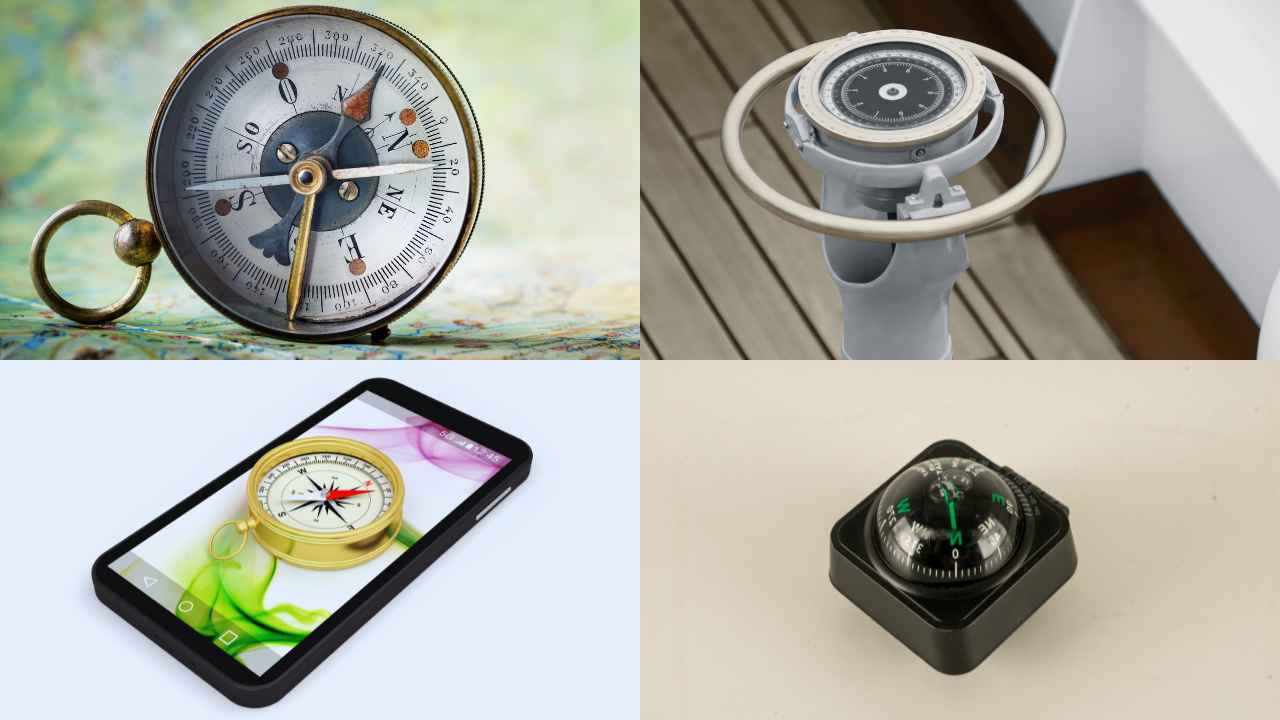
Compasses come in various forms, each designed for specific purposes and environments. Understanding the differences between these types is essential for selecting the right compass for your needs.
1. Magnetic Compasses
The most common and traditional type is the magnetic compass. As described earlier, it consists of a magnetized needle that aligns itself with Earth’s magnetic field. Magnetic compasses are simple, reliable, and don’t require a power source, making them popular for basic navigation in outdoor activities like hiking and orienteering. Variations of magnetic compasses include:
- Baseplate Compasses: Commonly used in orienteering and hiking, featuring a clear baseplate for map reading.
- Lensatic Compasses: Often used by the military, these compasses have a flip-up lens that helps in sighting and reading bearings accurately.
2. Gyrocompasses
Gyrocompasses, unlike magnetic compasses, are based on the principles of angular momentum. They use a rapidly spinning wheel and rotation of the Earth to find true north, as opposed to magnetic north. Key features include:
- True North Orientation: Gyrocompasses point to the geographical North Pole, eliminating the need to calculate the magnetic declination.
- Stability: They are not affected by external magnetic fields, making them suitable for use in ships and aircraft where magnetic compasses would be unreliable due to metal structures.
3. GPS Compasses
GPS (Global Positioning System) compasses use signals from satellites to determine location and direction. They differ significantly from traditional compasses:
- Accuracy and Information: GPS compasses can provide precise location data, speed, and direction of travel. They are highly accurate and useful in various applications, from navigation in cars to outdoor sports.
- Dependence on Power and Satellites: Unlike magnetic compasses, GPS devices require power and a clear view of the sky to receive satellite signals.
4. Other Variants
- Liquid-filled Compasses: These have a needle or dial suspended in a liquid to stabilize the compass needle and reduce erratic movements.
- Digital Compasses: Found in many modern devices like smartphones and watches, these compasses use magnetic sensors to determine direction.
Applications and Considerations
- Outdoor Navigation: Magnetic and GPS compasses are widely used for outdoor activities. Magnetic compasses are preferred for their simplicity and reliability in remote areas without power.
- Maritime and Aviation: Gyrocompasses are favored due to their ability to provide accurate readings unaffected by the vessel’s magnetic field.
- Modern Gadgets: GPS and digital compasses are commonly integrated into smart devices for everyday navigational assistance.
Uses of a Compass in Everyday Life
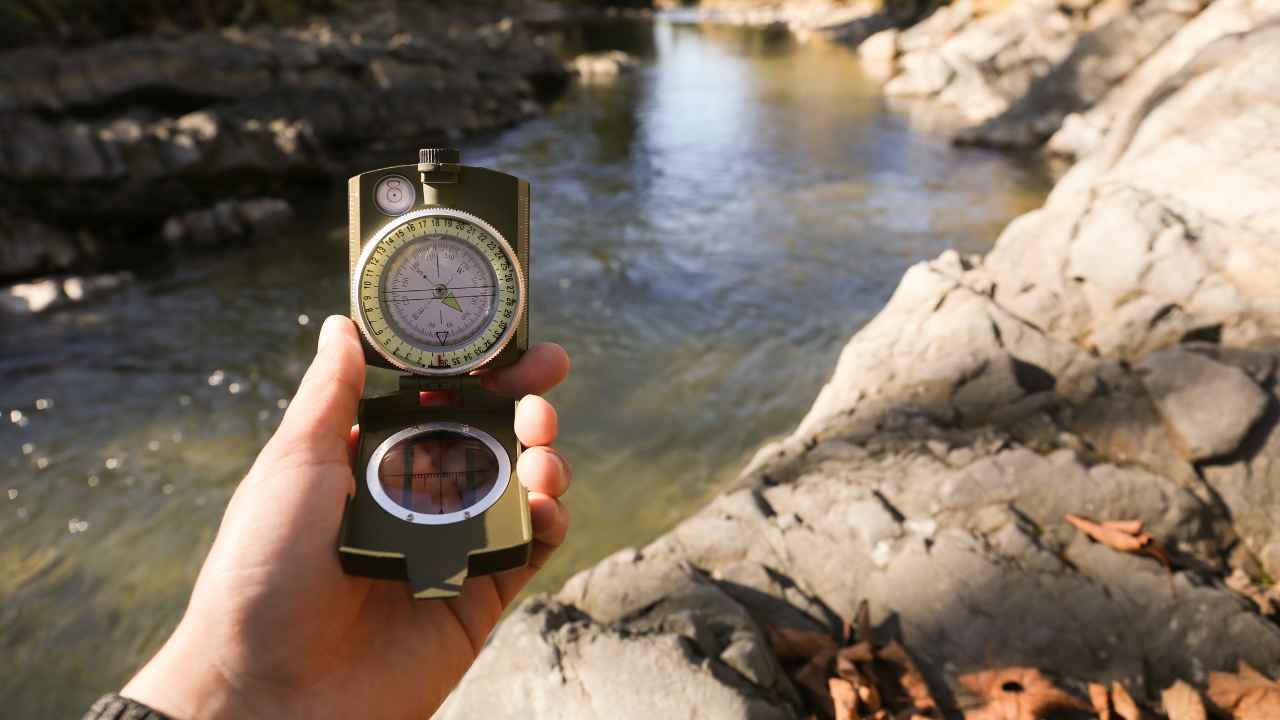
Compasses are versatile tools that find applications in various aspects of everyday life, particularly in outdoor activities and navigation. Here are some common scenarios where compasses are used:
1. Hiking and Trekking
In hiking, a compass is an essential tool for navigation, especially in remote or wilderness areas where GPS signals might be weak or unavailable. Hikers use compasses to:
- Orient Maps: Aligning maps with the surrounding terrain for accurate navigation.
- Find Bearings: Determining the direction of travel to reach specific destinations or landmarks.
- Stay on Course: Regularly checking the compass ensures hikers stay on the intended path, reducing the risk of getting lost.
2. Sailing and Boating
For sailors and boaters, a compass is a vital navigational instrument. It is used to:
- Set and Maintain Courses: Sailors use compasses to set the direction of travel and make adjustments as needed based on wind and water currents.
- Coastal Navigation: When navigating near coastlines, a compass helps in keeping a safe distance from land and navigating through narrow passages.
- Emergency Situations: In the event of electronic failures, a traditional magnetic compass serves as a reliable backup for navigation.
3. Orienteering
Orienteering is a sport where participants navigate through unfamiliar terrain using a map and a compass. The compass plays a crucial role in:
- Determining Directions: Athletes use compasses to align their maps with the terrain and decide on the best route to reach control points.
- Cross-Country Navigation: In terrain without distinct paths, a compass is indispensable for maintaining the right direction.
4. Geocaching
Geocaching, a recreational activity where people use GPS devices to hide and seek containers, often involves compass use for:
- Final Approach: When GPS gets you close to the cache, a compass can help with the final steps, especially in dense areas where GPS accuracy diminishes.
5. Scouting and Educational Activities
In scouting and educational programs, compasses are used to teach:
- Basic Navigation Skills: Young learners and scouts are often taught how to use a compass for fundamental navigation.
- Survival Skills: Compasses are part of survival training, teaching individuals how to navigate in challenging environments.
6. Everyday Technology
- Smartphones and Wearables: Many modern smartphones and smartwatches include digital compasses, helping users with directions in daily life, like finding a restaurant or navigating city streets.
7. Military Operations
The military uses compasses for:
- Land Navigation: Soldiers are trained in using lensatic compasses for precise navigation during land operations.
- Artillery and Targeting: Compasses are used in aligning and targeting in various military operations.
8. Adventure Sports
In adventure sports like mountaineering and backcountry skiing, a compass is used to:
- Navigate in Extreme Conditions: In environments where landmarks are scarce, such as in heavy snow or fog, a compass is vital for keeping on track.
9. Field Research
Scientists and researchers use compasses for:
- Orienting Fieldwork: In disciplines like geology and archaeology, compasses help in mapping and orienting field sites.
10. Photography
For photographers, particularly those interested in landscapes and astrophotography, a compass helps to:
- Find Perfect Angles: Determining the direction of sunrise, sunset, and positioning for capturing celestial events.
In each of these scenarios, the compass serves as a reliable tool for orientation and navigation, demonstrating its enduring importance in a variety of fields and activities.
Compass and Map Reading Skills
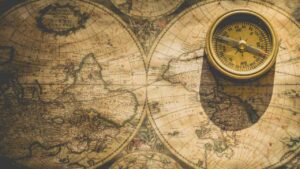
The ability to read a compass in conjunction with a map is a fundamental skill for outdoor navigation. This skill enables individuals to find their way in unfamiliar territories or when electronic devices fail. Here’s a basic guide on how to use a compass with a map:
Understanding the Map
- Orientation: Begin by orienting the map. This means aligning the map so that its north matches the real-world north. To do this, place the compass on the map and rotate the map until the compass needle aligns with the north marking on the map.
- Map Symbols and Scale: Familiarize yourself with the symbols and scale used on the map. This helps in understanding distances and identifying various geographical features like rivers, trails, and elevations.
Using the Compass
- Parts of the Compass: Understand the basic parts of the compass – the baseplate, the rotating bezel (or housing), the orienting arrow, and the direction of travel arrow.
- Setting a Bearing: To walk a specific direction, set a bearing on your compass. Rotate the bezel so that the desired degree on the bezel aligns with the direction of travel arrow.
- Taking a Bearing from a Map: To find out which direction to head towards a specific point on the map, place the edge of your compass on the map so that the baseplate connects your current location with your desired destination. Then, rotate the bezel until the orienting lines inside the bezel align with the map’s north lines. The bearing to follow is now set in the direction of travel arrow.
Putting It Together
- Aligning Map and Compass: With your bearing set, hold the compass flat in your hand and turn yourself until the compass needle aligns with the orienting arrow in the bezel. Your direction of travel arrow on the compass now points in the direction you need to go.
- Checking Your Progress: As you travel, use your compass to check that you’re still on course by regularly ensuring that your compass needle remains aligned with the orienting arrow.
- Landmarks and Adjustments: Use landmarks as points of reference to confirm you’re on the right path. Adjust your bearing as needed when navigating around obstacles.
Additional Tips
- Magnetic Declination: Remember to account for magnetic declination, the difference between magnetic north and true north. Many maps provide declination information, and some compasses allow for declination adjustment.
- Practice: Regular practice in a familiar area can enhance your map and compass skills and understanding of how to use these tools effectively.
- Stay Updated: Ensure your map is current, as landscapes can change over time due to various factors like construction, erosion, and trail rerouting.
Advanced Techniques
- Triangulation: This technique is used to pinpoint your exact location. It involves taking bearings from your location to two or three known points on the map and then drawing lines along these bearings on the map. The point where these lines intersect is your location.
- Pacing: Learn to estimate distances by counting steps. This is particularly useful in combination with a map to gauge how far you’ve traveled.
Fun Facts and Trivia
- Animal Navigation: Some animals, like pigeons and sea turtles, have a natural ability to navigate using Earth’s magnetic field. This is known as magnetoreception, and it helps them in long-distance migrations and finding their way back home.
- Historical Expeditions: The compass played a crucial role in the Age of Discovery. Explorers like Christopher Columbus and Vasco da Gama relied on it for their historic voyages across the oceans, leading to the discovery of new lands.
- Ancient Compasses: The earliest compasses were not used for navigation but for spiritual purposes in China, aligning buildings according to feng shui.
- Magnetic Mountains: In medieval times, people believed that magnetic compasses pointed towards a mysterious “Magnetic Mountain” somewhere in the far north.
- Pole Reversals: The Earth’s magnetic poles have switched places multiple times throughout history. The last reversal happened about 780,000 years ago.
- Vikings and Sunstones: There’s a theory that Vikings might have used a type of crystal called a sunstone to navigate on cloudy days, by locating the sun’s position.
- Space Exploration: Compasses don’t work on other planets. Mars, for instance, does not have a global magnetic field like Earth, making Earth-style magnetic navigation impossible.
DIY Compass Activity
Making a simple compass at home is a fun and educational activity for kids. Here’s a straightforward guide:
Materials Needed:
- A small sewing needle (about 1-2 inches long)
- A small magnet
- A shallow dish or bowl
- Water
- A small piece of foam, leaf, or paper
Steps:
- Magnetize the Needle: Rub one end of the needle with the magnet about 30-50 times in one direction. This magnetizes the needle.
- Prepare the Water Surface: Fill the bowl or dish with water.
- Float the Needle: Place the piece of foam, leaf, or paper on the surface of the water. Then, carefully place the magnetized needle on top of it. The needle should be balanced and able to rotate freely.
- Observe the Needle: The needle will slowly align itself along the north-south axis. The end that was rubbed with the magnet points towards the north.
Safety Note: Supervise children during this activity, especially when handling the needle and magnet.
The Importance of Compasses in History
Compasses have played a pivotal role in shaping human history, particularly in the age of exploration and beyond. Here are some key historical highlights:
- Age of Discovery: Compasses were crucial in the 15th and 16th centuries, enabling European explorers like Christopher Columbus and Vasco da Gama to navigate the high seas and discover new lands. This period marked the beginning of global exploration and trade.
- Military Campaigns: Throughout history, compasses have been used in military campaigns for land navigation and strategy planning, significantly impacting the outcomes of many battles.
- Maritime Advancements: The development of the marine compass greatly improved maritime safety and efficiency, leading to the expansion of trade routes, including the famous Silk Road and Spice Routes.
- Polar Expeditions: In the late 19th and early 20th centuries, explorers like Roald Amundsen used compasses for navigating the Arctic and Antarctic, contributing to our understanding of these remote regions.
- Scientific Research: Compasses have been instrumental in scientific fields like geology and geography, aiding in field studies and mapping the Earth’s surface.
Safety Tips for Using a Compass
- Always Carry a Map: A compass should be used in conjunction with a map. Familiarize yourself with the map and understand how to align it with the compass.
- Check for Magnetic Interference: Keep the compass away from metallic objects, electronic devices, and electrical sources that can affect its accuracy.
- Regularly Check Your Direction: When navigating, regularly check your compass to ensure you are on the correct path.
- Learn to Read the Compass Properly: Misreading a compass can lead to wrong directions. Practice and understand how to read bearings and align with landmarks.
- Prepare for the Unexpected: In wilderness settings, always have a backup plan in case the compass fails or is lost.
- Stay on Known Paths: Especially in unfamiliar terrain, it’s safer to stick to established trails and use the compass for confirmation rather than exploration.
Future of Navigation Tools
While modern technology like GPS and advanced navigation systems have revolutionized how we navigate, the traditional compass still holds its significance. Here’s why:
- Reliability: Compasses do not rely on batteries or satellite signals, making them reliable in remote or challenging environments.
- Simplicity and Accessibility: A compass is a simple, user-friendly tool that doesn’t require advanced technical knowledge or connectivity.
- Backup Tool: In the event of electronic failures or lack of signal, a compass serves as an essential backup for navigation.
- Educational Value: Learning to use a compass teaches fundamental orientation and navigation skills, promoting outdoor literacy and self-reliance.
- Complementary to Modern Tools: In many situations, compasses are used in tandem with modern technology, providing a comprehensive approach to navigation.
The compass, with its rich history and fundamental principles, continues to be an indispensable tool in various fields. Despite the advancements in digital navigation, the basic, reliable nature of the compass ensures its ongoing relevance in the modern world.
In summary, compasses have not only been instrumental in shaping human history and exploration but also remain an essential tool in the present, complementing modern navigation technologies with their reliability and simplicity.

